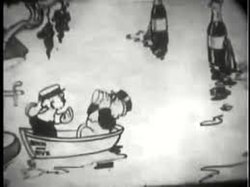
Whizzer is the name of several fictional characters appearing in American comic books published by Marvel Comics. The first character debuted during the Golden Age in USA Comics #1, and was reintroduced in Giant-Size Avengers #1. A second villainous version debuts during the Silver Age in The Avengers #69, and a second heroic version debuting in The Avengers #85.
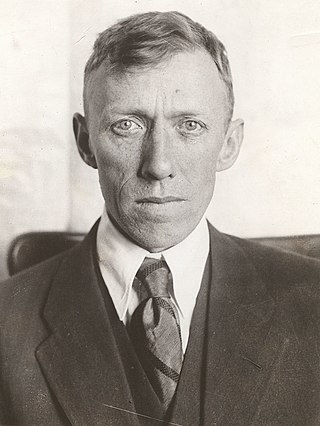
Thomas Aloysius "Tad" Dorgan was an Irish American cartoonist. He is known for his cartoon panel Indoor Sports and comic strip Judge Rummy, as well as the many English words and expressions he coined or popularized.
United Feature Syndicate, Inc. (UFS) is a large American editorial column and comic strip newspaper syndication service based in the United States and established in 1919. Originally part of E. W. Scripps Company, it was part of United Media from 1978 to 2011, and is now a division of Andrews McMeel Syndication. United Features has syndicated many notable comic strips, including Peanuts, Garfield, Li'l Abner, Dilbert, Monty, Nancy, Over the Hedge, and Marmaduke.
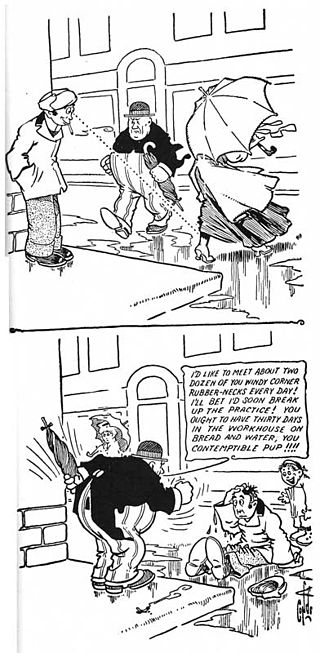
The Outbursts of Everett True was an American two-panel newspaper comic strip created by A. D. Condo and J. W. Raper that ran from July 22, 1905 to January 13, 1927, when Condo had to abandon it for health reasons.

Smitty was a newspaper comic strip created in the early 1920s by Walter Berndt. Syndicated nationally by the Chicago Tribune New York News Syndicate, it ran from November 27, 1922, to 1974 and brought Berndt a Reuben Award in 1969.

Milt Gross was an American cartoonist and animator. His work is noted for its exaggerated cartoon style and Yiddish-inflected English dialogue. He originated the non-sequitur "Banana Oil!" as a phrase deflating pomposity and posing. His character Count Screwloose's admonition, "Iggy, keep an eye on me!", became a national catchphrase. The National Cartoonists Society fund to aid indigent cartoonists and their families, for many years was known as the Milt Gross Fund. In 2005, it was absorbed by the Society's Foundation, which continues the charitable work of the Fund.
The Fantom of the Fair is one of the earliest published Golden Age superheroes. He debuted in Centaur Publications' Amazing Mystery Funnies vol. 2, #7, the overall 11th issue of that title. He premiered, according to cover dates, the same month as DC Comics' Sandman, Fox Publications' The Flame, and Centaur's Masked Marvel. He was created by Paul Gustavson, who had previously created the Arrow for Centaur.
This is a timeline of significant events in comics in the 1920s.
This is a timeline of significant events in comics in the 1910s.

Torchy is a comic strip and, primarily, a series of comic books featuring the ingenue Torchy Todd, created by the American "good girl art" cartoonist Bill Ward during 1944. The character was ranked 97th of the 2011 Comics Buyer's Guide's "100 Sexiest Women in Comics" list.

Crack Comics is an anthology comic book series published by Quality Comics during the Golden Age of Comic Books. It featured such characters as The Clock, Black Condor, Captain Triumph, Alias the Spider, Madame Fatal, Jane Arden, Molly the Model, and Red Torpedo. The title "crack" referred to "being at the top of one's form", like a "crack sharpshooter".

Mike and Ike (They Look Alike) was a comic strip by Rube Goldberg, who introduced the identical twin characters in the San Francisco Bulletin on September 29, 1907. The strip was syndicated by the McClure Syndicate from March 9, 1913, to February 1, 1914.
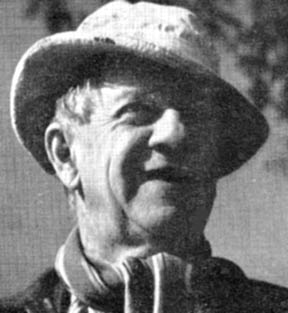
Clare Victor Dwiggins was an American cartoonist who signed his work Dwig. Dwiggins created a number of comic strips and single-panel cartoons for various American newspapers and newspaper syndicates from 1897 until 1945, including his best-known strip, the long-running School Days.

Richard William Dorgan was an American cartoonist, writer, and illustrator. His first known published work appeared in The New York Call in 1913. A wide variety of his early work was published in The Broadside: A Journal for the Naval Reserve Force, 1918–1920.
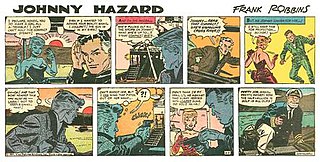
Johnny Hazard is an action-adventure comic strip created by cartoonist Frank Robbins for King Features Syndicate. It was published from June 5, 1944, until August 20, 1977, with separate storylines for the daily strip and the Sunday strip.
The Bell Syndicate, launched in 1916 by editor-publisher John Neville Wheeler, was an American syndicate that distributed columns, fiction, feature articles and comic strips to newspapers for decades. It was located in New York City at 247 West 43rd Street and later at 229 West 43rd Street. It also reprinted comic strips in book form.
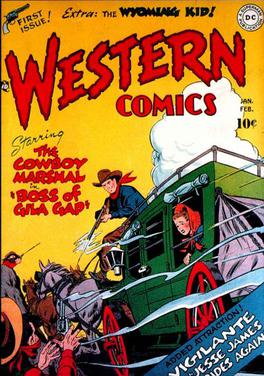
Western Comics is a Western comic book series that was published by DC Comics. DC's longest-running Western title, it published 85 issues from 1948 to 1961. Western Comics was an anthology series, featuring such characters as the wandering cowboy the Wyoming Kid, the Native American lawman Pow Wow Smith, the Cowboy Marshal, Jim Sawyer, showman Rodeo Rick, and Matt Savage, Trail Boss. The masked Vigilante Greg Saunders appeared in the first four issues of the title, but was soon replaced by itinerant fix-it man Nighthawk.

Colonel Heeza Liar is the star of the second animated series featuring a recurring character and the first featuring a recurring character created specifically for an animated film. Sidney Smith's Old Doc Yak appeared in 3 lost films in 1913 before Colonel Heeza Liar appeared. Smith's series though was based on his Old Doc Yak comic strip. Smith did 13 additional cartoons in 1914 and 2 in 1915. Colonel Heeza Liar was created by J. R. Bray and is mainly based on Theodore Roosevelt and the general stereotype of the 19th and early 20th century former adventurer and lion hunter. The series ran from 1913 to 1917 and restarted in 1922 until 1924. It was produced by Bray Productions and directed by Vernon Stallings. The series was animated by Walter Lantz from 1922 to 1924 and featured live-action segments interacting with the animation, much like the popular contemporary series Out of the Inkwell.
The New York Herald Tribune Syndicate was the syndication service of the New York Herald Tribune. Syndicating comic strips and newspaper columns, it operated from c. 1914 to 1966. The syndicate's most notable strips were Mr. and Mrs., Our Bill, Penny, Miss Peach, and B.C. Syndicated columns included Walter Lippmann's Today and Tomorrow, Weare Holbrook's Soundings, George Fielding Eliot's military affairs column, and John Crosby's radio and television column. Irita Bradford Van Doren was book review editor for a time.
The New York World was one of the first newspapers to publish comic strips, starting around 1890, and contributed greatly to the development of the American comic strip. Notable strips that originated with the World included Richard F. Outcault's Hogan's Alley, Rudolph Dirks' The Captain and the Kids, Denys Wortman's Everyday Movies, Fritzi Ritz, Gus Mager's Hawkshaw the Detective, Victor Forsythe's Joe Jinks, and Robert Moore Brinkerhoff's Little Mary Mixup.

